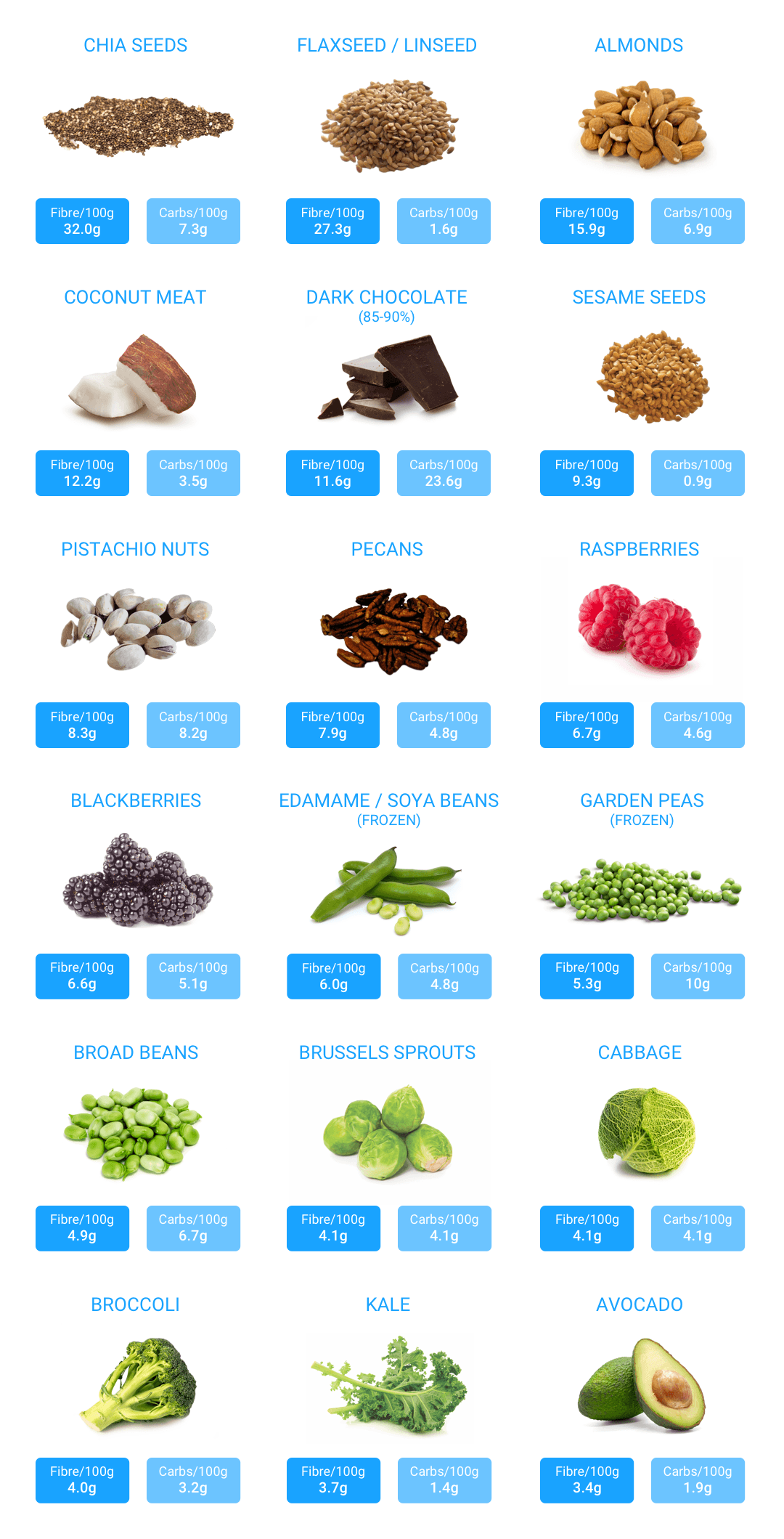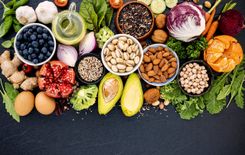Myth Busting: low carb = low fibre

A low carb lifestyle by its nature restricts the intake of sugary and starchy foods. Fibre is technically a type of carbohydrate, and can come packaged along with starch in foods like wholegrain products. This can lead some to believe that a low carb diet is also low in fibre, however, in this article, we will show you how you can maintain an adequate fibre intake without adding in extra carbs.

What is fibre and what does it do?
Fibre is a indigestible form of carbohydrate which can be found in range of plant foods. Instead of being absorbed in the small intestine, like much of what we eat, it either passes right through our digestive system, or becomes food for our gut bacteria in the large intestine.
There are two main types of fibre: insoluble and soluble. As the names suggest, insoluble fibre cannot dissolve in water, whereas soluble fibre can. These two types of fibre differ slightly in how they benefit our body.
Insoluble fibre helps add bulk to the stool, which is thought to help the food along and make bowel movements easier. Wholegrains are a source of insoluble fibre, however, many foods labelled as wholegrain are processed and / or high in carbs, and so are limited on so insoluble fibre can instead be gotten from a range of low carb vegetables.

Soluble fibre has additional metabolic benefits. Because it can dissolve in water, forming a gel-like texture, soluble fibre slows down the digestion of food and the absorption of glucose, which means blood glucose levels do not spike as high or as quickly after meals. Good sources of soluble fibre include nuts, seeds, avocado and green veg.
Both these types of fibre are associated with reduced risk of irritable bowel syndrome (IBS), cardiovascular disease (CVD), type 2 diabetes and colon cancer [1]. These benefits are thought to be, at least in part, due to the release of short-chain fatty acids released by our gut bacteria when they ferment the fibre. This is an interesting and upcoming area of research.
The recommended daily intake of fibre in the UK is 30g, although many people struggle to meet this.
The myth
It is sometimes said that a low carb diet is low in fibre, and so may have a negative impact on health. However, this is simply not true. A diet low in digestible carbohydrate does not need to be low in indigestible fibre [2].
Below is a range of low carb foods that you can include in your diet to reach your daily recommended fibre intake of 30g:

What does 30g of fibre look like?
It’s all well and good listing a load of fibrous foods, but how can we make them fit together in a day? Sign up to the Low Carb Program to check out our fibre-packed 1-day meal plan for some inspiration.
So hopefully we have shown here that a low carb diet needn’t be low in fibre, and that there is a large range of foods you can include in your low carb lifestyle to meet your daily recommended fibre intake








